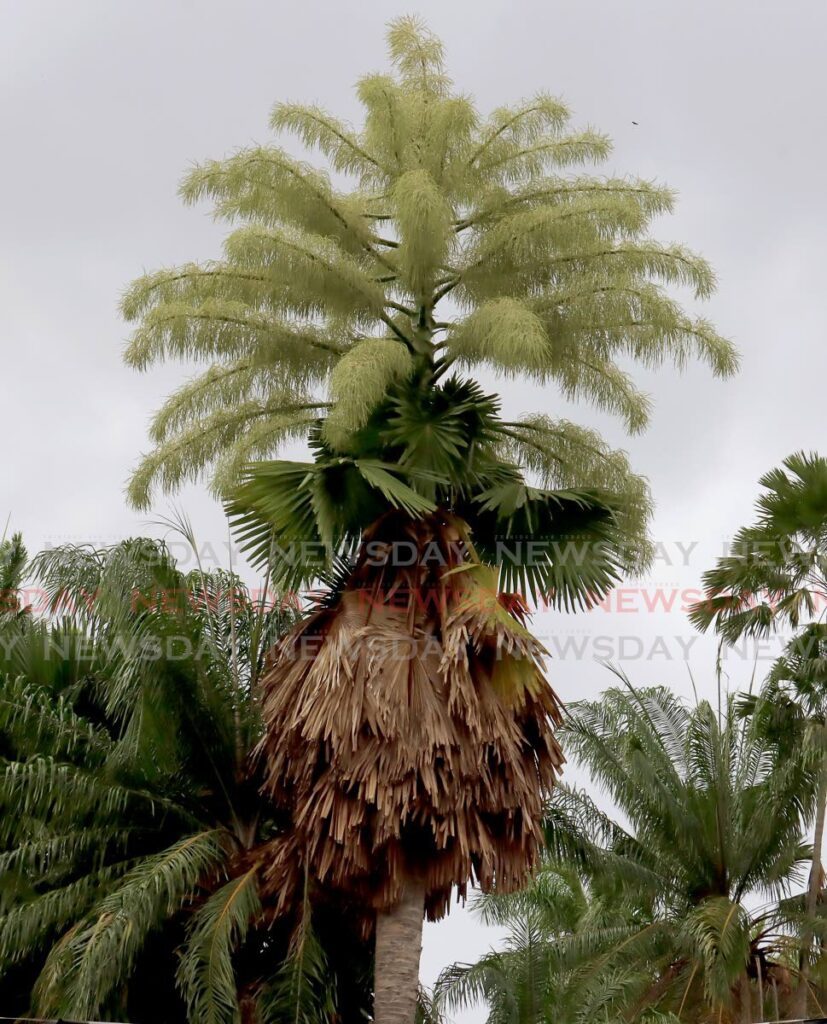Blooming miracle

PEOPLE in North America this week looked up to see the solar eclipse of April 8. But closer to home, some, specifically those who frequent the Queen’s Park Savannah in the capital city, have been looking up for a different reason.
The rare flowering of a talipot palm in the Botanic Gardens confronts us with a remarkable sight. This species of palm produces the world’s largest flower cluster. Branched stalks have spiked atop its trunk, each bearing hundreds of thousands of tiny flowers.
Many are accustomed to seeing palms all over the country. They have almost certainly never seen this: it is as though an entirely different plant has been superimposed, dwarfing the original crown like an oversized Carnival headpiece.
There is something eerie, even ghostly, about this surreal doubling, given that it signals the tree’s final flourish. Talipot palms live for as long as 80 years, but flower only once before fruiting – and then dying.
The solar eclipse lasted four minutes and 28 seconds for those who saw it, but it might take up to a year for the palm’s fruit to mature. The process cannot be predicted with certainty. And so, many people have been trekking to see it while they can.
With so many pressing issues facing our country, it might seem strange to draw attention to a plant. But the green spectacle quietly unfolding in the Botanical Gardens is a reminder of what needs to be done to fix our country.
So many people speeding around the Savannah may have taken for granted the sight of a strange-looking palm, if they noticed it at all. This teaches us a valuable lesson: we need to pay attention to the natural world around us.
That world extends to the people in the communities we live in, where so much of what is going gruesomely wrong has been worsened by incuriosity or indifference as we go about our social media-dominated days. The lives of many people might be changed, indeed saved, if a neighbour stops to take notice.
But the palm, standing in awkward proximity to an overground electricity pole, is also a symbol of the need to take better care of our green spaces. Those spaces are of importance to our well-being, mental health and quality of life. Yet sadly, they remain neglected or subject to unsuitable management.
Witness the painting of benches around the Savannah in wild, distracting colours, the haphazard stringing of now-tattered, years-old Independence Day bunting over the road, and the neglect of the space at the foot of the Lady Young Road, which serves as one’s first impression of the city when entering from that direction.
We should take far better care of the miracles around us.


Comments
"Blooming miracle"